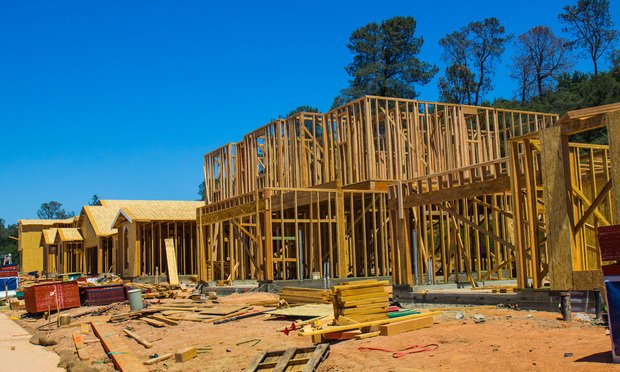
“Community Association Transition: Defects, Implied Warranties and Consumer Fraud,” New Jersey Law Journal
For every condominium and homeowner association, “control” is eventually transferred by the developer to an owner-controlled governing board after construction. This is called “transition.” A successful transition is one in which the owner-controlled board works with the developer to ensure appropriate governance, adequate financial resources, and a properly designed and constructed community. But what happens when negotiations fail?
How Does It Work?
The procedure for effective turnover of control is set forth by the New Jersey Condominium Act, N.J.S.A. 46:8B-1et seq., and the New Jersey Planned Real Estate Development Full Disclosure Act (PREDFDA), N.J.S.A. 45:22A-21, et seq. Under the Condominium Act, unit owners are statutorily entitled to elect all of the members of the governing board upon the conveyance of 75% of the units in a condominium. PREDFDA provides that turnover may occur on one of three triggers:
- 60 days after conveyance of 25% of the lots, parcels, units or interests, not less than 25% of the members of the executive board shall be elected by owners;
- 60 days after conveyance of 50% of the lots, parcels, units or interests, not less than 40% of the members of the executive board shall be elected by the owners; or
- 60 days after conveyance of 75% of the lots, parcels, units or interests, the developer’s control of the executive board shall terminate at which time the owners shall elect the entire executive board.
N.J.A.C. 5:26-8.4(a). However, notwithstanding these events, the developer may retain one seat on the executive board so long as there are any units remaining unsold. N.J.A.C. 5:26-8.4(b). And, a developer may surrender control at an earlier time, provided the owners agree by majority vote to assume control. N.J.A.C. 5:26-8.4(c)-(d) (emphasis added).
The legislative intent of these statutes is to protect unit owners. As the court stated in in Flinn v. Amboy Nat. Bank, 436 N.J. Super. 274 (App. Div. 2014), transition ensures that control passes to unit owners to ensure that they are in a position to safeguard their property interests. Moreover, “[t]he developer is not to retain control of the association once it becomes clear that the statutory criteria for the transfer of that control have been triggered” (emphasis added).
The timing of turnover is critical. Until transition occurs, the developer has a fiduciary responsibility to the unit owners in the administration and management of the association. However, once transition occurs, the owner-controlled association assumes responsibility for the administration and management of the association through its executive board. And, of course, the interests of the developer and those of the association are no longer aligned and often diverge.
What Happens Next?
There are many moving parts involved in transition. If there are no obvious and significant construction defects, and a negotiated settlement is best for all parties, “transition” consists of completing punch-list items, resolving any reserve discrepancies, and releasing any municipal bonds. The owner-controlled governing board should seek evaluations by professional architects, engineers and accountants to ensure that (a) all common areas have been designed and constructed properly, and (b) the developer has properly identified, accounted for and appropriately allocated reserves for the future replacement of common elements. These tasks should all be completed before negotiating any transition settlement or entering into a release in favor of the developer. Sometimes litigation is inevitable. This is true whether it arises from costly repairs, unrealistic demands by the association, refusal of a developer to accept responsibility, or a legitimate disagreement. In these instances, litigation is appropriate. While there are many avenues for recovery against the design professionals and contractors, the implied warranty of habitability and Consumer Fraud Act provide potential avenues of recovery against developers.
In New Jersey, it is well established that implied warranties apply to both commercial and residential construction projects. See, e.g., Hodgson v. Chin, 168 N.J. Super. 549 (App. Div. 1979); McDonald v. Mianecki, 79 N.J. 275 (1979); Aronsohn v. Mandara, 98 N.J. 92 (1984). With respect to residential construction in particular, New Jersey courts have found that implied warranties of habitability and workmanship apply. Builders must construct a residential dwelling that it is appropriate for its intended use, of reasonable workmanship and habitable.
The extension of implied warranties of workmanship and habitability to residential construction projects bucks the traditional doctrine of caveat emptor, or “buyer beware.” Indeed, in Schipper v. Levitt & Sons, 44 N.J. 70 (1965), the court observed that “[b]uyers of mass-produced development homes are not on an equal footing with the builder vendors and are no more able to protect themselves in the deed than are automobile purchasers in a position to protect themselves in a bill of sale.” Id. at 91–92. A few years later, in McDonald, supra., the Supreme Court extended the principles of Schipper to a small-scale builder of new homes and held that the implied warranty of habitability applied such that the doctrine of caveat emptor “as applied to new houses is an anachronism patently out of harmony with modern home buying practices.” Id. at 290. The imposition of an implied warranty of habitability and workmanship on builders reflects an equitable risk allocation to the developer of the necessary expertise to discover and address nonconformity resulting from defective design, materials or installation.
Many of these defects are latent—not readily observable to the untrained eye. Internal components of a home such as septic systems, pipes, ventilation, framing components, roofs and foundations are not subject to a simple visual inspection regarding potential defects. Further, many defects remain dormant for years before their symptoms manifest. Ultimately, the builder is the only party that can be reasonably expected to prevent defective construction and, in particular, detect issues with systems that will remain hidden behind other components of the building. Thus, it is reasonable for unit owners to rely upon the skill and experience of developer entities to construct the condominium with reasonable workmanship and be fit for habitation.
In addition, a developer’s responsibility is heightened by the New Jersey Consumer Fraud Act (CFA) which prohibits deception in the marketing and sale of real estate. In this context, consumer fraud means misrepresentations or omissions in the Public Offering Statement (POS) filed with the Department of Community Affairs and provided to prospective purchasers.
An affirmative misrepresentation in the POS or other marketing material is actionable under the CFA if it is material to the transaction, false in fact, and made to induce the buyer to purchase—regardless of whether the buyer has in fact been misled. A fact is material if “a reasonable person would attach importance to its existence in determining a choice of action[,]” or if one knows that another “regards or is likely to regard the matter as important in determining [a] choice of action, although a reasonable [person] would not so regard it.” Ji v. Palmer, 333 N.J. Super. 451, 462 (App. Div. 2000) (citation omitted).
A developer who makes an affirmative misrepresentation is liable even in the absence of knowledge of the falsity of the misrepresentation, negligence or the intent to deceive. For example, in Belmont Condo. Ass’n v. Geibel, 432 N.J. Super. 52, 62 (App. Div. 2013), cert. den., 216 N.J. 366 (2013), the Appellate Division upheld a claim under the CFA against a developer of a condominium, based on a statement made in its public offering statement that there were no known defects in the common elements of the building that a prospective purchaser could not determine by a reasonable inspection. The jury in Belmont found that the developer’s affirmative statement—while true when made before construction—had the capacity to mislead an average reader because the building suffered from water infiltration and mold infestation as a result of various construction deficiencies resulting in the imposition of treble damages and the shifting of counsel fees and costs. Id.at 68, 80.
To recap, the first thing to do when faced with transition is to identify the triggering event for a change in control. Once control is turned over, the association should seek out the appropriate professionals and legal counsel during transition to guide them through the process to ensure that all risks are appropriately addressed. While negotiation is the preferred end to transition, litigation may be necessary. The correction of non-conforming defects is usually an expensive endeavor and will undoubtedly burden an owner or association with unexpected costs. Variations from building codes may also subject the developer to liability. Thus, engagement of experienced counsel conversant with the implied warranty of habitability and the CFA is critical to proceeding forward once negotiations break down.
Reprinted with permission from the New Jersey Law Journal.






